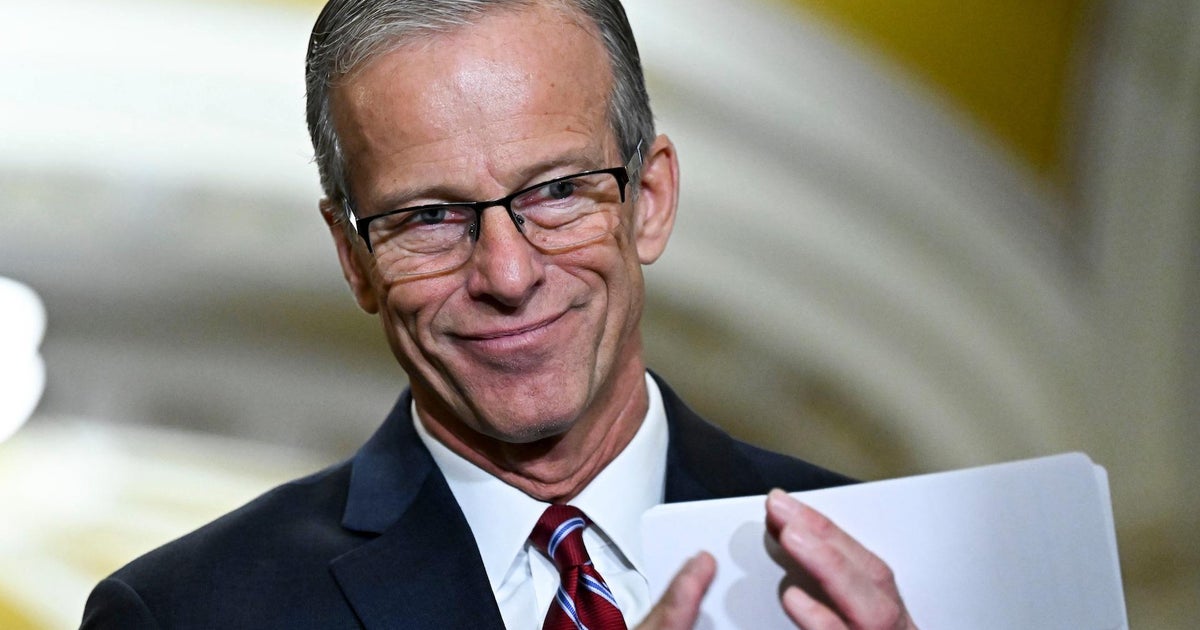CBS News 2024 presidential election analysis: How many voters are persuadable?
With a close contest between Kamala Harris and Donald Trump, including very tight battleground races, just how much room is there for movement before the election? Campaign ads and voter contact efforts aim to reach voters who might be persuaded to change their minds in the coming weeks. So, just how many persuadable voters are out there?
While the precise number depends on the exact definition of "persuadable," it's a small sliver of the electorate any way you look at it. That's because partisan loyalty has been high in recent years. Routinely, over 90% of Democrats and Republicans vote for their party's nominee. And few voters change which party they support from election to election. For example, according to exit polling, only 4% of Hillary Clinton's 2016 voters switched to Trump in 2020, and the percentage of Trump 2016 voters crossing over to Joe Biden in 2020 was also in the single digits.
Relatedly, we don't find many voters who say they're unsure of their vote choice, even several months before Election Day. Nor are there many backing candidates who say they would even consider someone else.
That said, even a tiny group can be decisive. The last two presidential elections were decided by fewer than five percentage points nationally, and more importantly, by mere fractions of a point in the pivotal states. That makes the small group of potentially persuadable voters worth analyzing. Let's put some more precise numbers on this group.
Under narrow definition, who might flip between Harris and Trump?
One sensible definition of a "persuadable" voter is someone who's open to switching their vote. Nationally, 7% of Harris voters say they at least might consider Trump. And 8% of Trump voters say so of Harris. (Most say "Maybe, there's still time," as opposed to an outright "Yes, I would.")
Putting these groups together, just 7% of all likely voters are persuadable — or "flippable" — under this definition. That doesn't mean they will flip, but they at least signal an openness to it.
While we don't know who will flip when they cast an ballot, we can use survey data to get a sense of who's been oscillating between candidates this summer. We have surveyed about a thousand voters at least twice since Mr. Biden dropped out, typically more than 10 days apart. Only 2% of them switched from Harris to Trump or vice versa between interviews.
A broader definition: Who's unsure or only leaning toward a candidate?
A somewhat broader definition would also include voters who are not sure of their vote initially or only are leaning toward Harris or Trump. That's because even if they haven't flipped so far, they are less firm than voters who pick one of these candidates outright. (Voters who said they were initially unsure or voting third party were then asked whether they lean toward Harris or Trump.)
Under this definition, 12% are persuadable — that's about 1 in 8 likely voters nationwide. This measure is down slightly from July, when Biden was still in the race. And it's a bit lower than the number in competitive states when Mr. Biden and Trump ran four years ago. The 1-in-8 figure also applies in the battlegrounds — the most competitive states that will see the most campaign activity trying to convince voters this fall.
What do persuadable voters look like?
Persuadable voters, by either definition, are younger and more racially diverse. They tend to identify as politically independent, and they're somewhat likelier than other voters to use social media platforms like Instagram and TikTok for news.
And importantly, pocketbook concerns may be more salient for them. They are more likely than firmly decided voters to say their vote will mostly be about their personal financial situation, as opposed to their rights and freedoms.
They also aren't as likely to have turned out in recent elections or say they will be voting this year. That means part of the challenge for campaigns is getting these voters to turn out, which often goes hand in hand with persuasion.
At the moment, they are roughly even on leaned vote, but Harris may have more room to grow: 7 in 10 say they might consider her if they aren't already, while only half say so of Trump. And while the vast majority say they know what Trump stands for, only half say so about Harris.
Harris' advantage with this group also represents an improvement from July. Just before Mr. Biden dropped out, most persuadable voters said they would not consider him if they weren't already.
In fact, some Democratic leaning voters who were undecided last month when Mr. Biden was the presumptive nominee have already shifted to Harris. She is enjoying a higher "floor" of support than Mr. Biden did, with more Democratic voters now locked into their decision. Part of the reason there's been a decrease in the number of persuadable voters since a month ago is that Biden 2020 voters, including many independents, are more firmly behind Harris than they were Mr. Biden.
This analysis is primarily based on a CBS News/YouGov survey of 3,258 registered voters nationwide fielded August 14-16, 2024. The sample was weighted according to gender, age, race, and education based on the U.S. Census American Community Survey and the U.S. Census Current Population Survey, as well as past vote. The margin of error for registered voters is ±2.1 points. Battleground states are Arizona, Georgia, Michigan, Nevada, North Carolina, Pennsylvania, and Wisconsin.
Toplines:








